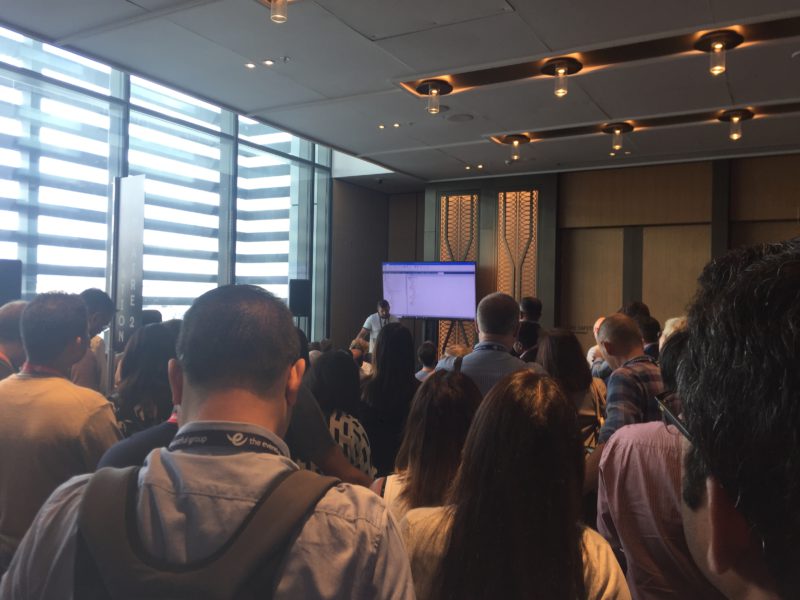Back in 2007, an acquaintance from the Sydney University economics faculty was interested in writing about the Soviet Union. Having studied the country’s history exhaustively – particularly for my undergraduate thesis, we felt we had the ability to produce a meaningful article on the economic changes taking place in Russia, and the historical path that led to those changes. Having Ignatius present to check my numbers and figures along the way helped. It’s still, I think, a good piece, for something that was published back in 2008.
So here now, is the piece that was published back in 2008 by the Sydney Globalist.
Russian Capitalism in Transition
Ilya Popov and Ignatius Forbes consider the difficulties facing Russia as it journeys towards a fully functioning market-based society.
“They pretend to pay us and we pretend to work.”
– Communist-era adage
It was a moment in history that former Russian President Vladimir Putin called “the greatest geopolitical catastrophe of the twentieth century”: the collapse of the Soviet Union in 1991. There it was, a socialist, military superpower that in its last years had a non-existent GDP, chronic ethnic tensions, and an ideology that had failed to fulfil the prophecies spun by its creators. All of the problems that the Communist Party had tried so hard to ignore rose to the surface, one by one, under the rule of the Communist Party’s last General Secretary, Mikhail Gorbachev. Budget deficits that had previously been hidden came to light, and threw an already unstable economy into further disarray. Tax revenues from breakaway republics suddenly vanished. Increasing political turbulence and ad hoc economic and social reforms ultimately undermined the entire legitimacy of the ideology upon which the Soviet system was built.
“There it was, a socialist, military superpower that in its last years had a non-existent GDP, chronic ethnic tensions, and an ideology that had failed to fulfil the prophecies spun by its creators.”
17 years have passed since the ideals and dreams of the Bolshevik party came to a sudden and tumultuous end. But what followed? Under Boris Yeltsin, the first President of the Russian Federation, reforms were initiated that would have functioned perfectly well in a Western economy. In Russia, however, they failed miserably, resulting in hyperinflation, a declining GDP, poor agricultural productivity, and the banking crisis of 1998, during which the Russian rouble devalued and further impoverished an already economically downtrodden society
Despite loans from the IMF and guidance from Western advisers, the Yeltsin presidency managed to push a strained economy to the brink. Banks closed overnight, investor confidence was lost, prices skyrocketed, and stores suddenly looked as sparse and empty as they had during the final years of Soviet rule. Trust in banks and Western credit systems dropped, and bartering continued to remain a normal way of purchasing and exchanging goods. By 1998, the GDP of the Russian Federation was 55 times smaller than that of the USSR in 1989.
How could the IMF and Western powers not have anticipated all of these problems? What dramatic rift existed between Russia and the West that made it unclear to Western economic powers that Russia’s transition from a planned economy to a market economy would be anything but stable? If Poland and Czechoslovakia could make the transition to a market economy with only a minimal amount of instability, then why not Russia?
Communication Failure
The problems and tragedies suffered by the Russian peoples over the last 17 years are partly the result of poor decisions made by intellectuals who failed to understand the problems they faced. Economists, governments and advisers, both foreign and local, found themselves attempting to assist Russia whilst failing to understand either the nature of the beast with which they were dealing, or the effects of the ideas that they were importing from abroad. Advisers who felt that “shock therapy” capitalism was the only viable means by which to depart from a command economy, failed to consider the outcome of such notions. Such aggressive policies may sound intelligent on paper, but they are by no means a universal repair-kit for floundering economies.
Yet some continued to favour such actions, believing them to be beneficial despite all evidence to the contrary. Anders Åslund, the former director of Russian and Eurasian Programs at the Carnegie Endowment for International Peace, favoured swift and radical reforms such as a mass privatisation of property. He completely ignored how alien the notion of private property was to the standard Soviet Russian, and instead argued that “although the Polish private sector was hardly ever smaller than the Russian private sector … Russia’s problems were largely the result of corruption, not privatization”.
“How could people accustomed to communal housing and living off the state suddenly afford – or even comprehend – private property?”
Declarations such as these miss the point, by failing to ask why. How could people accustomed to communal housing and living off the state suddenly afford – or even comprehend – private property? Corruption did not simply appear spontaneously. Its emergence was directly linked to economic policies that failed to better the life of the average Russian. No amount of platitudes about wanting and desiring freedom and private property could change such a fundamental fact. Intellectuals such as Åslund failed to understand just how difficult it would be to reconcile 74 years of life under a planned economy with the demands and problems of a market economy.
To compound the problem, the Russian populace did not fully understand what was happening around it. No educational reforms had been put into place to ease the transition back into the capitalist world after 74 years in the communist prison. In their groundbreaking text, The Commanding Heights, Daniel Yergin and Joseph Stanislaw recalled how the average Russian thought that “the market could not be trusted. It did not accord with Russia’s unique situation. Fundamentally, what seemed to be unfolding before their eyes was immoral; it ran against their deepest instincts. Money made in the market was automatically suspect. Speculation was the all-purpose term of opprobrium and insult”. How could anyone, for example, dare to do something as bold as appraise a factory that was changing hands between companies?
What the West had failed to do was to understand how deeply ingrained the Soviet mentality was, and make any steps towards changing it during Gorbachev’s rule as the last President of the Soviet Union. It was assumed by many political advisers abroad that what Russians wanted was freedom, and once they had it, they would know what to do with it. They made assumptions about Russia that were based on how they, as Westerners, viewed their universe. They failed to understand just how entrenched the Soviet way of life had become in the people.
Economic Fallout
Grigory Yavlinsky, a Russian economist and former leader of the Yabloko political party, rightly stated: “In the last ten years, Russia has learned that an open society has one more enemy: capitalism that is not limited by laws, civil institutions, tradition, belief, trade unions – by anything at all. It is capitalism that drives itself by the wild will for profit at any price”. The West failed to understand the ideological matrices that informed the Soviet mentality. By neglecting to take into account Russia’s distinct lack of cultural, social, and intellectual infrastructures necessary to transition to a market-based economy, they took steps that would ultimately worsen East-West relations.
The contemporary by-product of this deteriorating relationship is revealed in the statistics for foreign direct investment (FDI) in Russia. The Russian Federal Service of State Statistics presented figures suggesting that FDI inflows remained sluggish in Russia when compared to former Soviet bloc states and other Communist states alike. FDI inflows in 2002 were US$818 billion to the Czech Republic, as opposed to only US$28 billion to Russia. The Czech Republic’s foreign investments are nearly 30 times that of Russia, yet its natural resources are nowhere near the size of Russia’s.
Compared to Russia, the Czech Republic has been making strident efforts to maintain its political and economic transparency, which has resulted in an increased number of investments from international firms in both the technological and agricultural sectors of the Czech economy. Like Poland, the Czech Republic is a former Soviet bloc country; yet it is not having nearly as much difficulty integrating into the world economy as Russia. The best possible explanation to account for this oddity is that, unlike Russia, the Czech Republic was ready and willing to shed its Soviet-era inefficiency, both culturally and economically. But Russia, unlike Poland and Czechoslovakia, had nothing to which to return once the Communist government was overthrown. For too many, the Soviet way of life was the accepted way of life.
“The question now remains of how to move forward and build a new system that integrates the best of the West and abandons the worst of the East.”
Towards a Third Way
The question now remains of how to move forward and build a new system that integrates the best of the West and abandons the worst of the East. Andrey Nikolayevich Illarionov, a former economic policy advisor to Vladimir Putin, stated several years ago that Russia needs to create “a civil service, a social security system, a rule of law, a level playing field, banking reform, and much more”. To do so would require Russian society to finally shed its Soviet clothing, import the best ideas from the West, such as civic duty, and develop a love of civil service to foster national and cultural unity, rather than resurrect outdated and misguided social organisations such as the Komsomol youth movement.
In 2005, Andrey Nikolayevich Illarionov resigned from his position, declaring: “This year Russia has become a different country. It is no longer a democratic country. It is no longer a free country”. He declared what far too many critics had feared: that Russia was returning to its pre-Soviet, autocratic roots. If this is to be curbed and democracy is to be fostered, then the West has an obligation to advise Russia as best as possible, to help the country move forward, rather than backward, towards the third way, in which the ideals of democracy – not autocracy – rule. A return to a non-democratic state that advocates cultural and economic isolation is no longer possible in a globalised world. Russia needs all of the help it can get to understand this.
Ilya Popov recently completed his Master of Publishing.
Ignatius Forbes is in his year of an Economics degree. He is currently undertaking honours in Economics.







